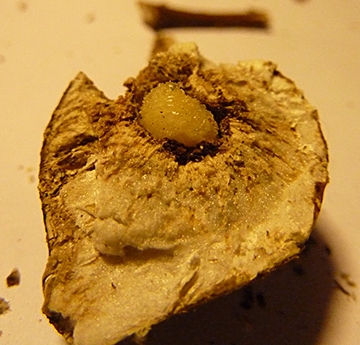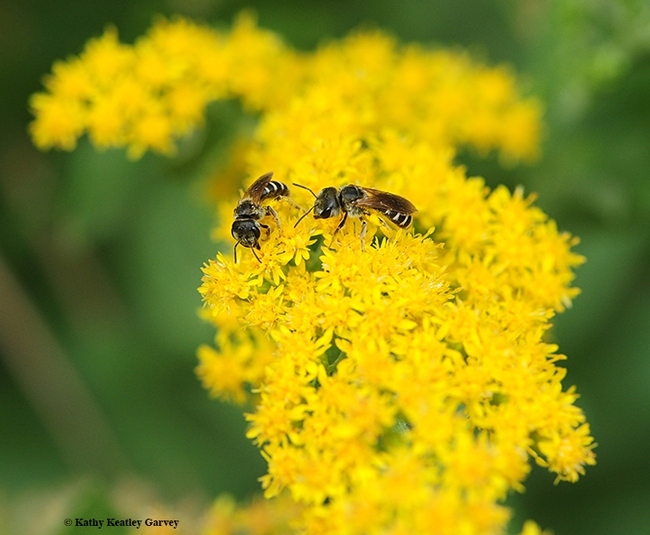
Tooker speaks at 4:10 p.m. in 122 Briggs Hall, off Kleiber Hall Drive in a seminar hosted by the UC Davis Department of Entomology and Nematology.
Some of the key words are corn fields, soybean fields, no-till fields, neonicotinoid seed treatments, slugs, goldenrods, carabid beetles, goldenrod gall fly, volatile emissions, and eavesdropping plants.
“Top-down (natural enemies) and bottom-up (plant defense) effects are well-known regulators of herbivore populations," Tooker says in his abstract. "Our recent research has revealed some unexpected strengths of both types of effects, one in field crops and the other with the goldenrod Solidago altissima. In no-till corn and soybean fields in Mid-Atlantic states, slugs are challenging pests for farmers, but carabid beetles can provide adequate control. Unfortunately our recent research has found that ubiquitous neonicotinoid seed treatments can disrupt this predator-mediated control. Our follow-up work has revealed the extent of adoption neonic seed treatments, the generality of their effects on natural enemies, and control options for farmers."

Goldenrods are particularly interesting to ecology researchers. These plants are insect-pollinated and they host numerous insect herbivores, including gall-inducing insects.
"Gall-inducing insects force their host plants to form novel, nutritive and protective tissues to house and or feed them," according to graduate student/now postdoctoral scholar Anjel Helms, writing on the Tooker lab website. "We still don't know exactly how galling insects induce these plant galls but we hope to figure out the mechanisms someday. One of the goldenrod gallmakers we study in the Tooker lab is the goldenrod ball gall fly, Eurosta solidaginis. The gall fly adults emerge in the spring and the male flies perch on the tops of goldenrod plants producing a volatile emission to attract females. After mating, the female flies lay their eggs into the apical buds of the goldenrod plants and the developing larvae induce ball-shaped galls in the stems of the plants."
"Goldenrod plants have evolved a variety of both chemical and physical defense strategies against the gall flies," Helms writes. "The Tooker lab's goldenrod research team is working to better understand these defenses and the chemical interactions between the goldenrod and the flies."
Check out Penn State's database of insect fact sheets.
Coordinating the UC Davis seminars are assistant professor Rachel Vannette; Extension apiculturist Elina Lastro Niño and Ph.D student Brendon Boudinot.
Attached Images:
